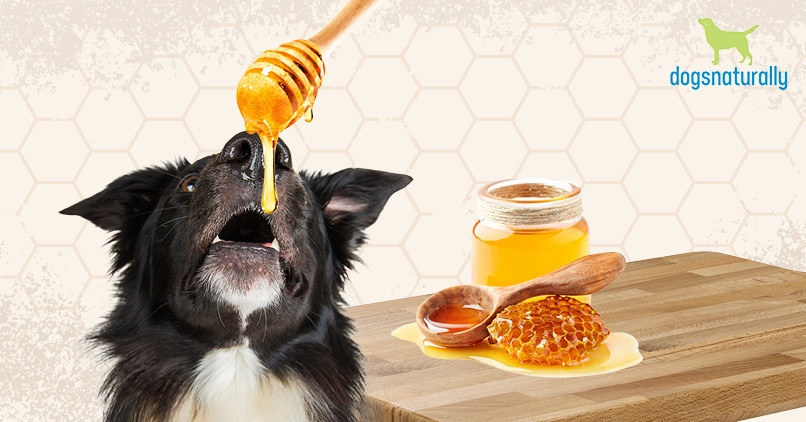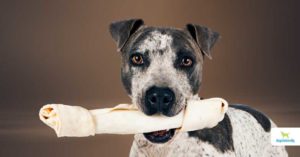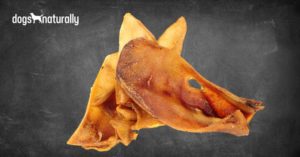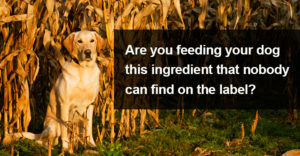You might have wondered, can dogs eat honey? The answer is yes … with one or two cautions. And it’s not just honey, but other products from the beehive … like pollen, propolis, royal jelly and beeswax. First let’s look at all of the ways you can use honey for dogs.
Is Honey Good For Dogs?
Honey is full of the vitamins, minerals and antioxidants your dog needs to stay happy and healthy. It can also help control allergy symptoms, skin issues and maintain a healthy weight. But it is high in sugar, so you do need to use caution. Here are the top 5 reasons to give your dog honey …
1. Raw Honey Can Help With Allergies
If your dog gets seasonal allergies, he may benefit from honey. Honey contains trace amounts of flower pollen.When you feed honey, it slowly introduces flower pollen into your dog’s body. This helps him create antibodies. When the warm weather arrives, these antibodies prevent an autoimmune response to airborne pollen.
Be sure to local for local honey, because it contains the local pollen that will affect your dog’s immune system.
Pollen also contains quercetin – a bioflavonoid with antihistamines. And this can help decrease watery eyes and itchiness.
“I recommend raw, unfiltered honey to strengthen dogs’ immune systems, so they won’t suffer reactions to seasonal and environmental allergens.” – Veterinarian Jay Brekke DVM in Castle Rock, Colorado
2. Honey For Skin Problems
If your dog gets problems like hot spots, eczema, or insect bites, topical honey can be a great way to help soothe and heal these common canine ailments. Honey can also help ease scratches, scrapes and wounds.
Unpasteurized raw honey has antibacterial, antifungal and antiviral properties. Not only because its low moisture content makes it hard for bacteria to grow … but because unpasteurized honey produces low levels of hydrogen peroxide. This antiseptic sanitizes without harming the healing tissues.
Honey also helps reduce pain and inflammation. And, enzymes in the honey help stimulate healthy skin growth.
Tip: If honey is too thick, thin it out by placing the jar in a warm water bath. This makes it more spreadable. After you apply it, cover with bandages to prevent your pup from licking it off.
3. Honey For Cough And Throat Irritation
You may already know this from your own experience …raw honey can do wonders for soothing a sore or itchy throat. The same goes for your dog.
If your dog has kennel cough or other breathing irritations, honey is a great way to provide relief.
4. Honey For Digestion
If your dog has trouble with digestive issues like …
- Indigestion
- Constipation
- Diarrhea
… a bit of honey daily can be an effective way to help with these stomach upsets. Honey contains both prebiotics and probiotics. And these play a big role in healthy digestion.
5. Honey For Weight Control
Studies have shown that eating honey can slow down the hunger response. Honey is a simple sugar, but it breaks down differently than table sugar. It requires less insulin and is absorbed more slowly into the bloodstream. This means it may slow down digestion and the conversion of glucose.
If your dog puts on weight easily, adding a bit of honey may help him maintain a healthier weight.
6. Honey For Wounds And Skin Irritation
Honey also has the capability to heal minor cuts, bruises and scratches. It can help treat a wide range of conditions, including eczema, stings or bites from insects.
Unpasteurized honey is known for its anti-fungal, anti-viral, and antibacterial properties, and these may allow for quicker healing.
You can experiment with applying honey to affected areas and then apply dressing to keep the dog away from eating it or making a mess in the home.
Obviously, this is only for minor cuts or scapes. If you have deep, more severe wounds, you should bring your pet for a thorough examination so that the wound can be closed.
A Word Of Caution About Giving Honey To Your Dog
Diabetic dogs need to be very careful with honey. There is research suggesting that honey may have some anti-diabetic effects in diabetes mellitus (type 2 diabetes). But most dogs get type 1 diabetes. This means their pancreas doesn’t make insulin properly.
If you want to give your diabetic dog honey, monitor how it affects his blood glucose very carefully … or, ask your holistic vet first.
Avoid feeding honey to dogs under 1 year of age. Raw honey may contain Clostridium botulinum spores. Because puppies are still developing their immune system, these spores could make them sick.
Other Benefits Of Honey For Dogs
Honey isn’t the only way bees can help your dog feel better. Bee pollen, propolis, royal jelly and beeswax all offer natural health solutions.
Bee Pollen
When pollinating flowers, worker bees carry the pollen back to their hives. This pollen acts as a complete food source for the bees. This leaves a small amount of pollen in your honey. That’s the reason it’s great for allergies!
But your dog can also eat the pollen itself to benefit from this. And pollen is also known to scavenge free radicals.
Free radicals are damaged molecules. They can be a byproduct of metabolism, but they can also come from exposure to chemicals, pesticides and radiation. These damaged cells seek out other electrons to repair themselves. This causes damage to other cells, proteins and DNA in your dog’s body, leading to cancer, premature aging and other common diseases.
Bee pollen can fight against these free radicals, helping your dog resist disease and slowing his aging process.
Propolis
In addition to pollen, bees also carry resins back to the hive. These resins are turned into propolis which makes their honeycomb and hive stronger. Propolis is a natural antibiotic. It’s been used to manage infections for thousands of years. It also has cancer inhibiting properties.
Like honey, propolis can be applied topically to help heal wounds.
Royal Jelly
Royal jelly feeds bee larvae. It can also transform a worker bee into a queen bee. Royal jelly can be a great way to give your dog more endurance and stamina. It may even help with depression and anxiety.
Beeswax
Beeswax is used in the construction of the hive and it can also make a healthy salve for your dog. Melt down the wax and mix it with herb infused oils (like calendula or plantain). Then apply the mixture to heal elbow calluses or help dry, cracked paws.
How Much Honey Can A Dog Have?
Honey can be a great addition to your dog’s diet, but don’t forget, it’s a simple sugar. Too much honey can have adverse side effects. Follow these guidelines to make sure your dog doesn’t get too much:
- Up to 10lbs – ¼ teaspoon of honey daily
- 10-20lbs – ½ tsp daily
- 20-50lbs – 1 tsp daily
- 50lbs+ – up to 2 tsp daily
As with all new things … start small. Add a drop to his dog food, until he gets used to the smell and taste. As he adjusts, start adding a bit more until you’re giving him the right amount of honey for his size.
If you give pollen, go even slower. Start with a few granules for a few days. If he does okay with this amount, give ½ teaspoon of granules per 25 pounds of weight.
And remember – any time you add a new food, always watch for changes in behavior and bowel movements to be sure it agrees with him.
What Kind Of Honey Can I Give My Dog?
As with many products these days, not all honeys are equal. Many grocery store products have little to no real honey in the container. Others are farmed using pesticides or fume boards. So you want to find the right kind of honey.
To make sure your dog gets all the goodness he can, look for honey that is pure, raw and unfiltered, and organic if possible.
Local beekeepers can be a great option.
TIP:
If you have raw and unfiltered honey, it will be a dark color and will crystalize when chilled. If not, the honey has been processed … and it won’t have the pollen and propolis that make it so good for you and your furry friend.
Thank The Bees
Bees give so much to you and your dog but did you know you can help give back? Experts say that in 2019 we lost about 40% of our bees. And that doesn’t just mean less honey production, because 75% of the world’s crops depend on pollinators. And those crops feed most of the world. If bees disappear, we could lose the diversity of our food supply.
And of course, the animals who eat those plants will also go hungry.
There are many theories on why bees are dying but the one most experts agree on is pesticides … specifically, neonicotinoids.
Neonicotinoid Pesticides
Neonicotinoids are widely used pesticides:
- Acetamiprid
- Clothianidin/Thiamethoxam
- Dinotefuran
- Imidacloprid
(Recognize that last one? It’s the active ingredient in Advantage and K9 Advantix flea and tick products.)
Neonicotinoids are said to be less toxic to humans but … they’re deadly to bees. Neonicotinoids are banned in some countries like the European Union and Canada. But the US has been slower to stop these toxins. In January 2020, the EPA proposed some guidelines to limit their use.
In the meantime, you can do your part to protect bees.
- Don’t use any pesticides in your yard
- Leave dandelions and other weeds alone (bees love them)
- Turn your yard into a bee sanctuary and plant lots of flowers
And while you support the bees, the bees can continue to make the healthy products that keep your dog feeling healthier for longer!
Final Thoughts
Honey offers a multitude of benefits for your furry friend, from supporting immune function and aiding in allergy relief to promoting healthy digestion and skin.
But as with any treat, moderation is key. The journey of integrating honey into your dog’s diet should be approached with care, so that you adhere to recommended dosages based on your dog’s weight and overall health.
While honey can be a remarkable natural remedy, it’s also crucial to select the right type. Opt for pure, raw, and ideally organic honey to maximize its health benefits without the risks associated with processed varieties.
Beyond honey, the bee hive offers other natural superfoods like pollen, propolis, and royal jelly, each with their own unique benefits.
The properties of these foods show the important contributions of bees to our ecosystem and wellbeing. By feeding high quality honey, you’re supporting bee populations and ensuring the continued availability of these amazing products, all while contributing to global food security!
FAQ
How much honey can you give a dog? You can safely give a small dog one teaspoon of honey per day and a large dog up to one tablespoon per day.
What can happen if a dog eats honey? Eating honey in moderation is safe for adult dogs, but excessive consumption can lead to weight gain and potentially contribute to tooth decay or upset their stomach.
What does honey do for dogs? Honey can benefit dogs by boosting their energy levels, aiding in digestion, and serving as a natural remedy for allergies due to its antioxidant and anti-inflammatory properties.
Can I give my dog a bit of honey? Yes, you can give your dog a bit of honey; it’s a sweet treat that can also help with allergies and soothe sore throats in moderation.












